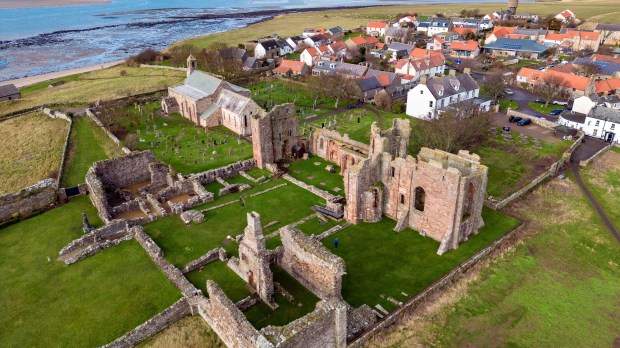For centuries, historians believed Archbishop Thurstan of York, a powerful figure in 12th-century England, was never formally recognized as a saint. But a dusty manuscript discovery is rewriting his story, revealing proof of his sainthood. Or, at least, of the fact that he was considered a saint in medieval England.
As read in the article published by Medievalists.net, Dr. Michael Carter, a historian for English Heritage, stumbled upon crucial evidence in a 15th-century service book from Pontefract Priory, a Cluniac monastery dedicated to St. John the Evangelist, founded about 1090 by Robert de Lacy.
Tucked among its pages, a calendar of saints’ feast days listed “St. Thurstan” on February 6, the anniversary of his death in 1140. The entry, significantly written in red ink, underscores his revered status among the monks.
This revelation rewrites Thurstan’s legacy. Previously known for his political prowess and religious reforms, he now could (re)gain recognition as a saint, alongside other revered figures of Northern England.
Thurstan’s influence transcended the Church. The article published in Medievalists.net explains how he championed religious reform, played a pivotal role in establishing iconic monasteries like Furness Abbey and Rievaulx Abbey – and even led the English army to victory against the Scots at the Battle of the Standard in 1138.
“While historians acknowledged Thurstan’s immense impact, sainthood remained elusive,” says Dr. Carter, quoted from Medievalists.net. “This manuscript provides undeniable proof, placing him alongside other Northern saints like St. William of York and St. Godric of Finchale.”
Born in Normandy around 1070, Thurstan eventually fulfilled a youthful vow to become a Cluniac monk, resigning as archbishop in 1140 and retiring to Pontefract Priory before his death shortly after. This discovery underscores the many hidden stories waiting to be unearthed within historical documents. Thurstan’s sainthood, long shrouded in uncertainty, now can begin to shine again, adding another layer to the complex, fascinating history of medieval England.



